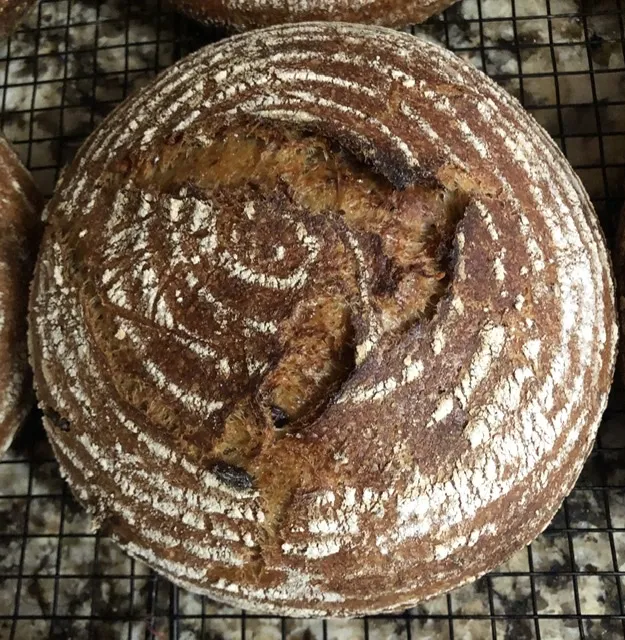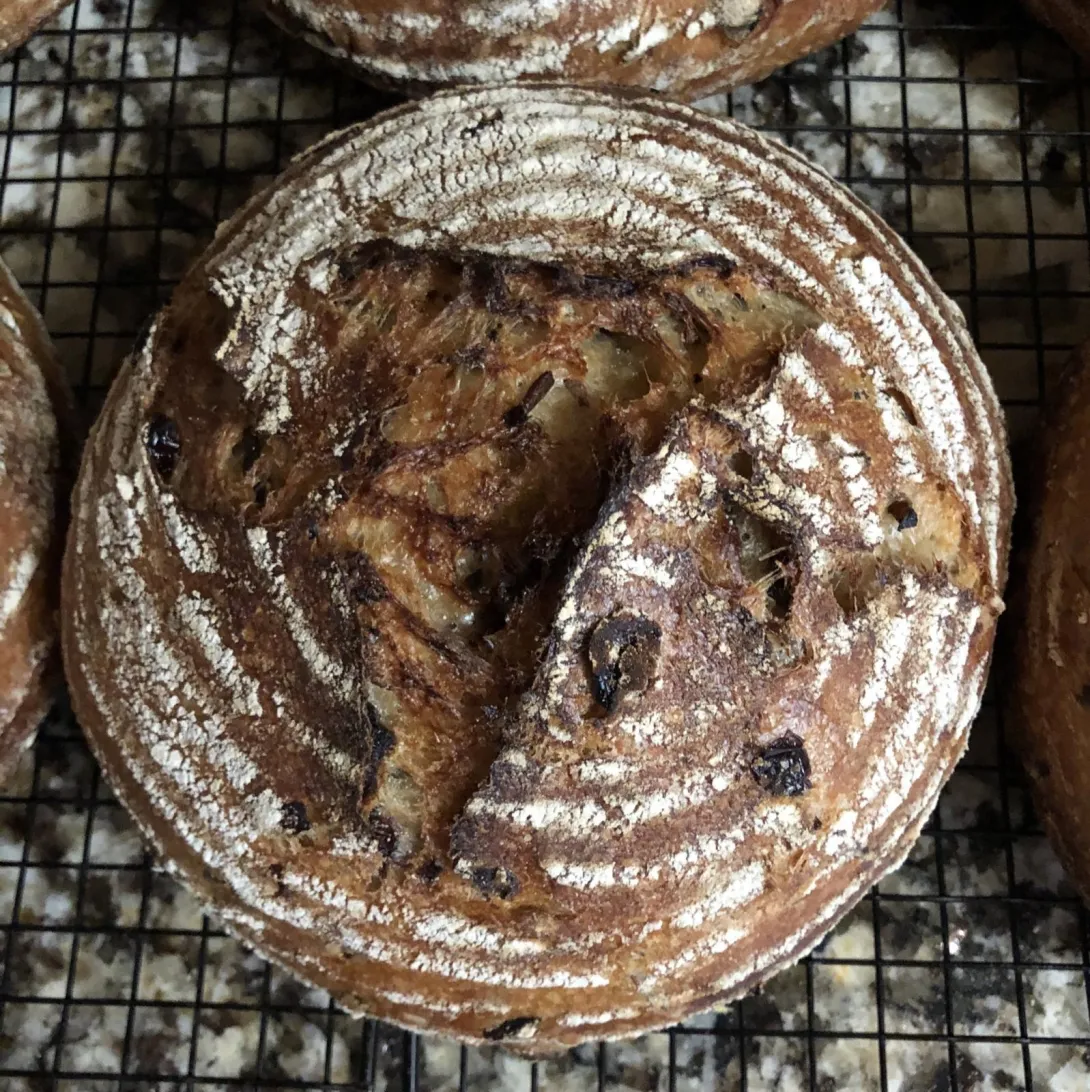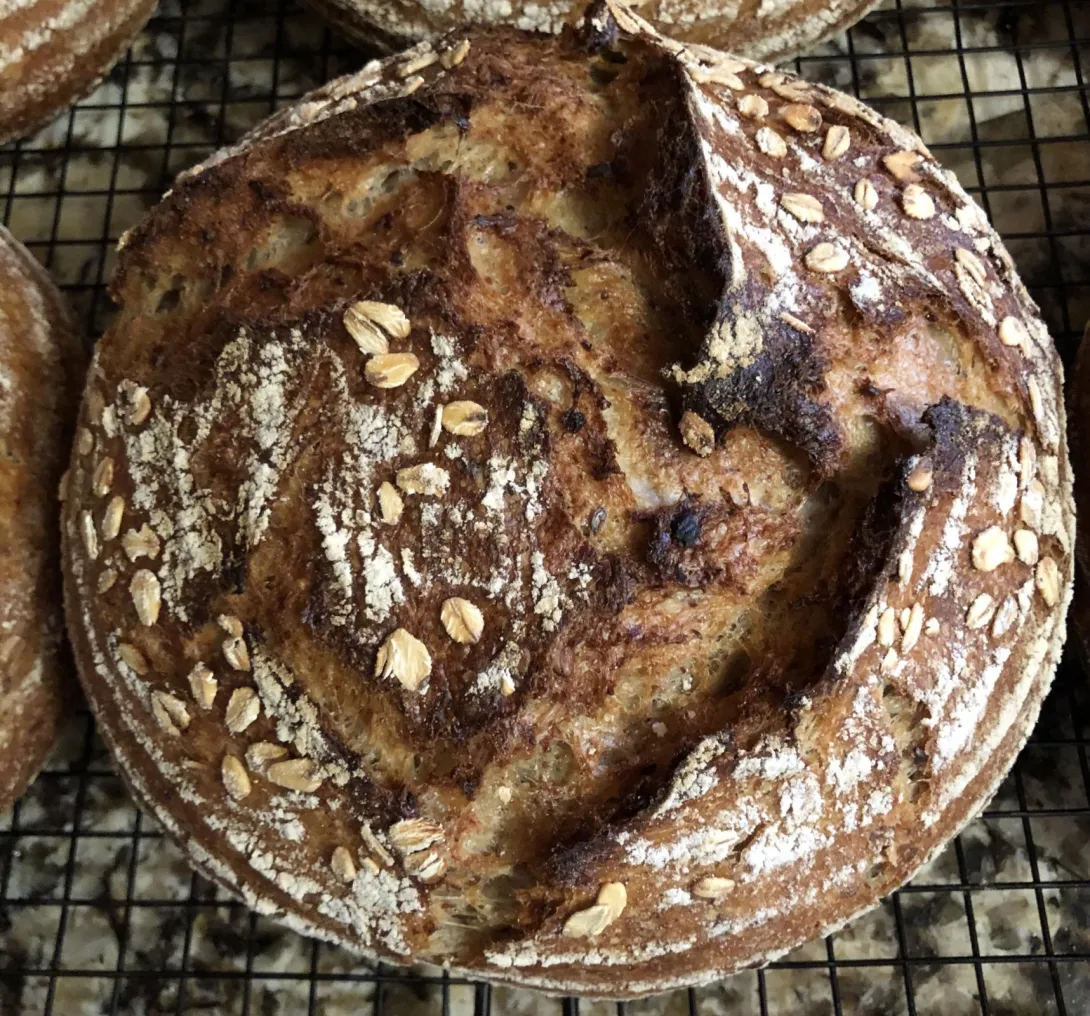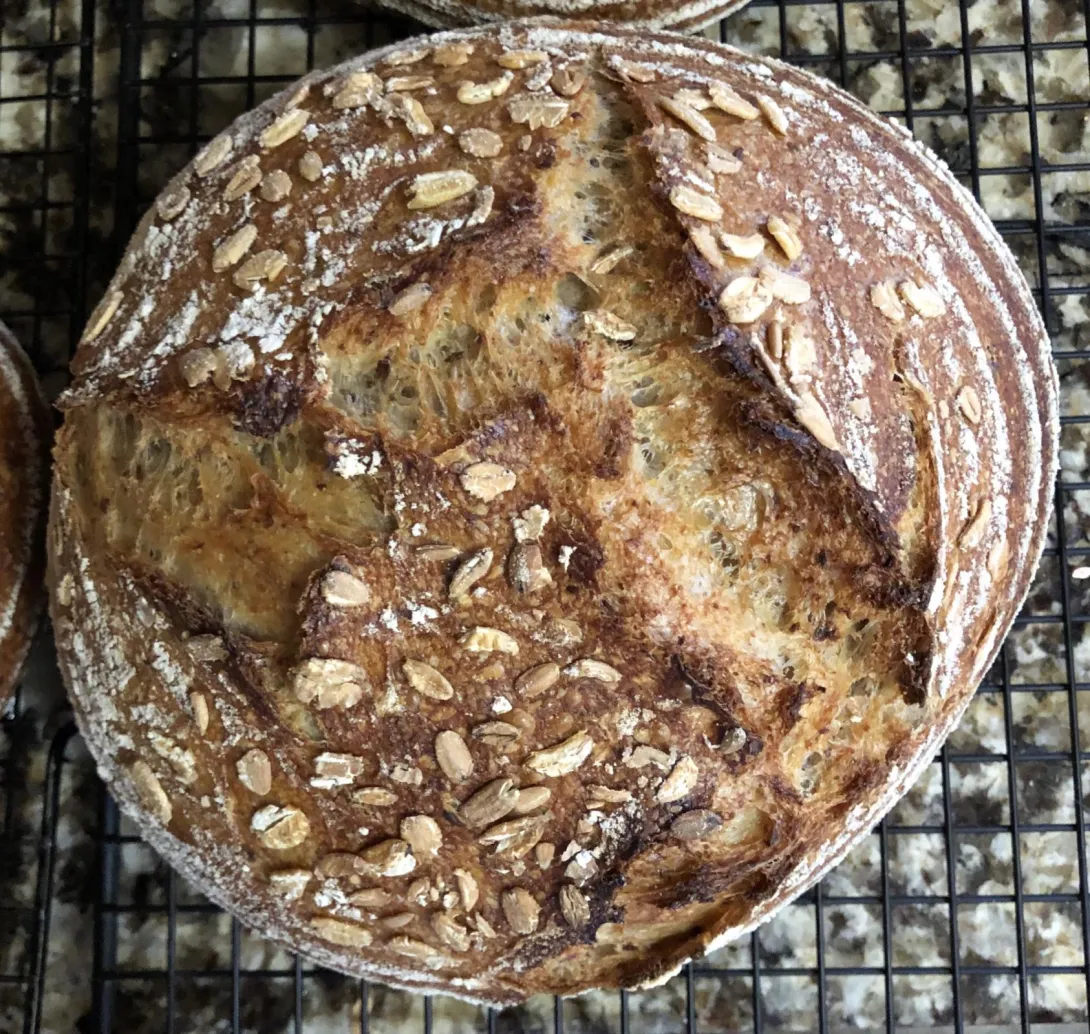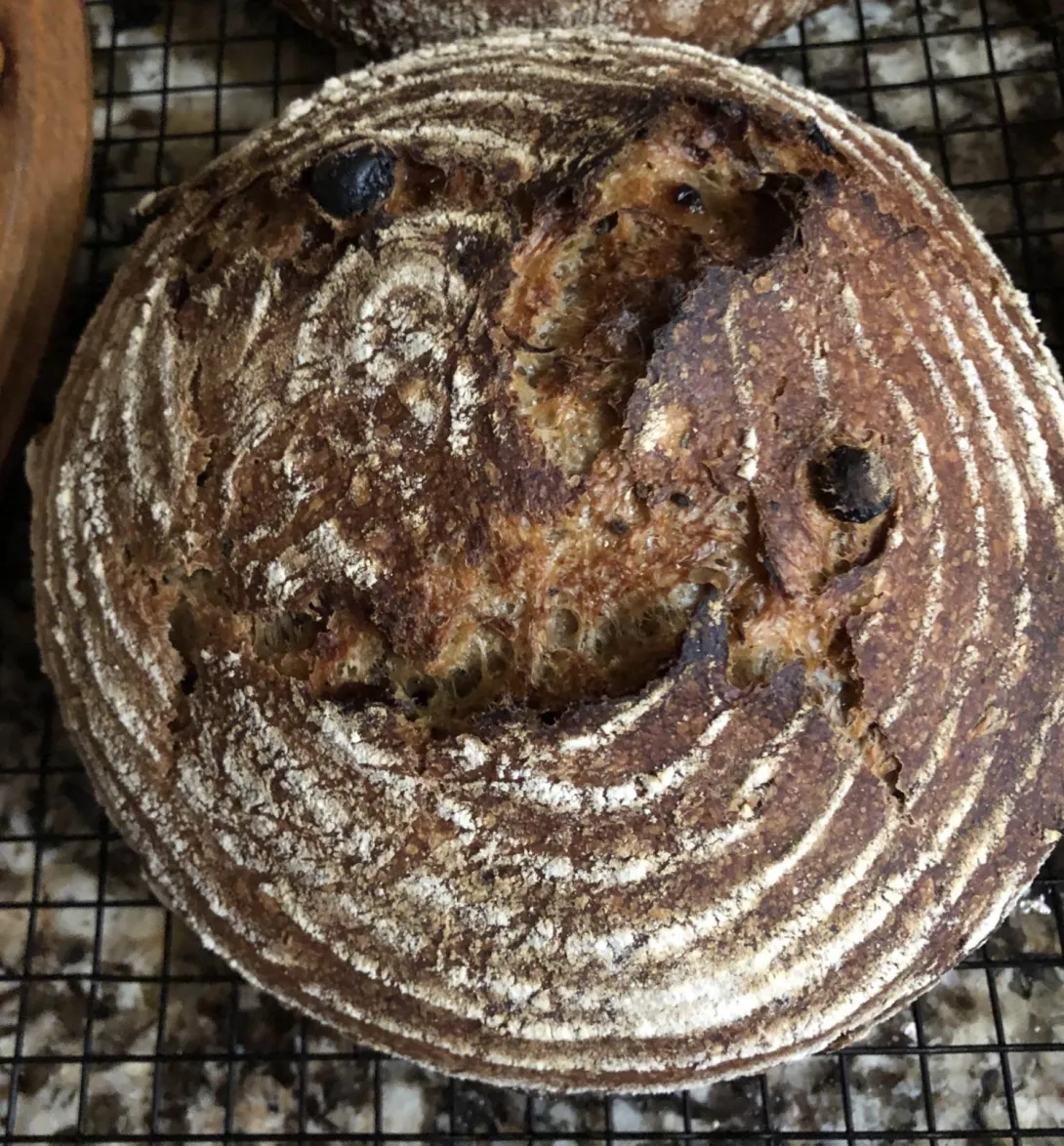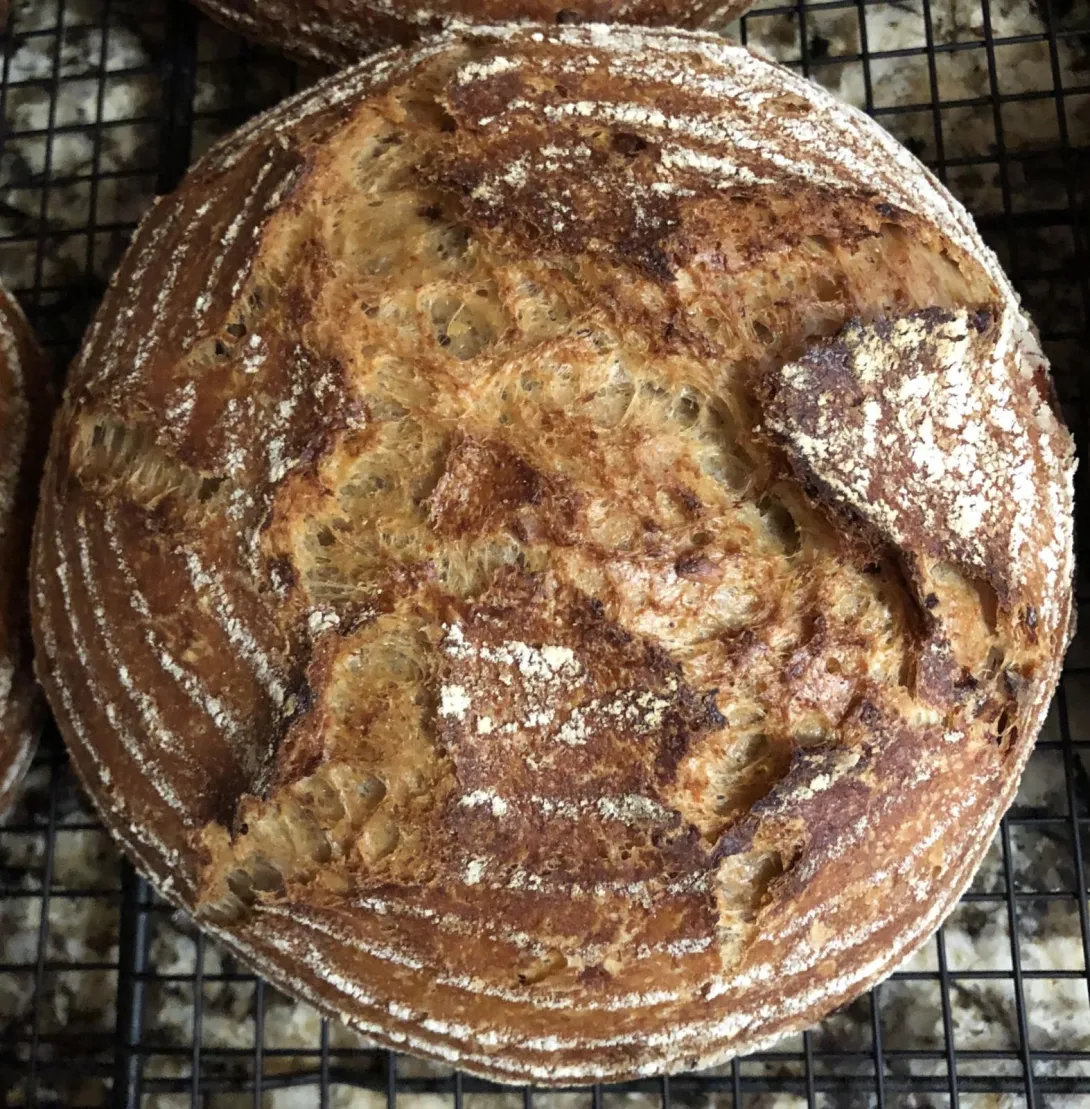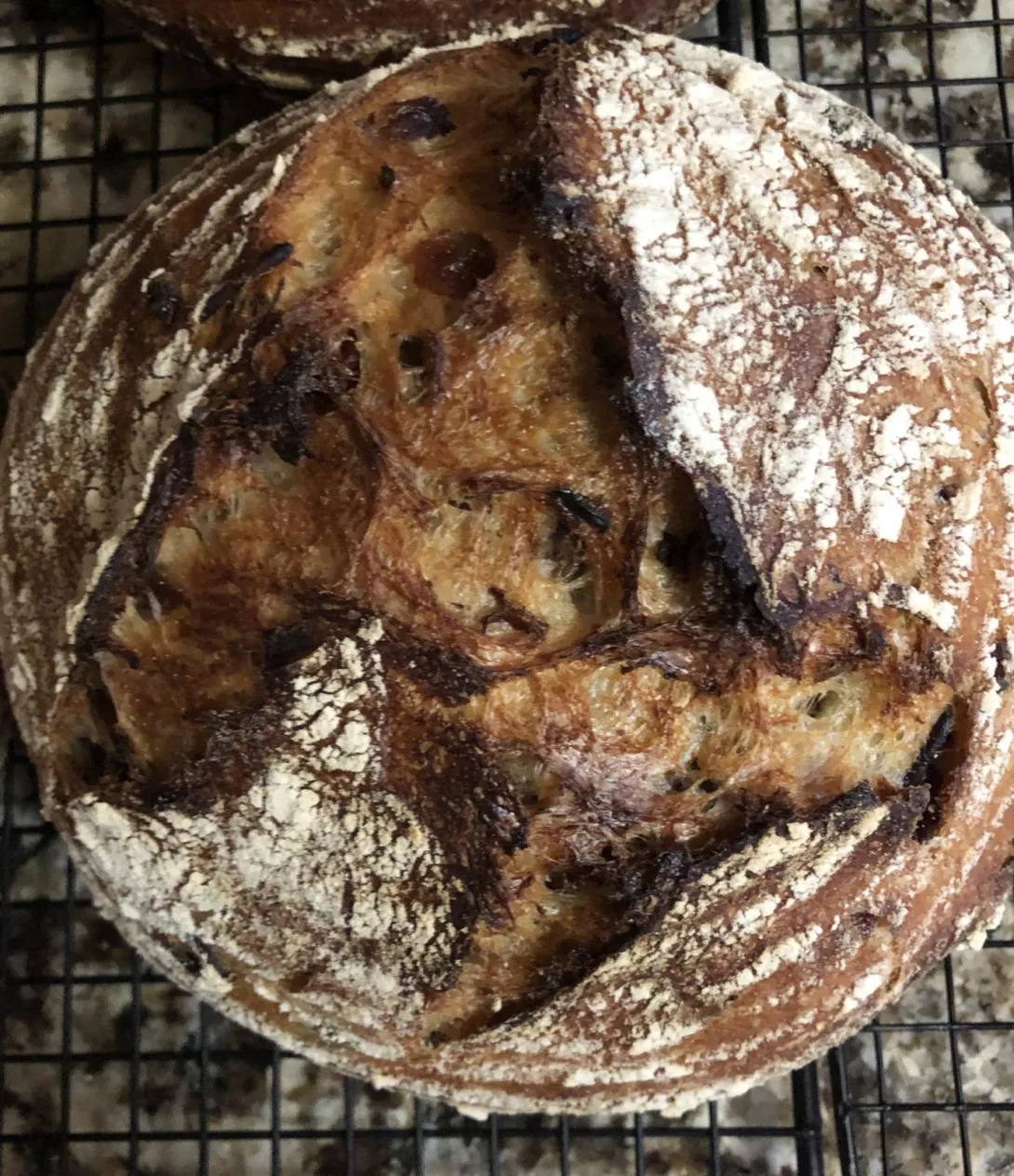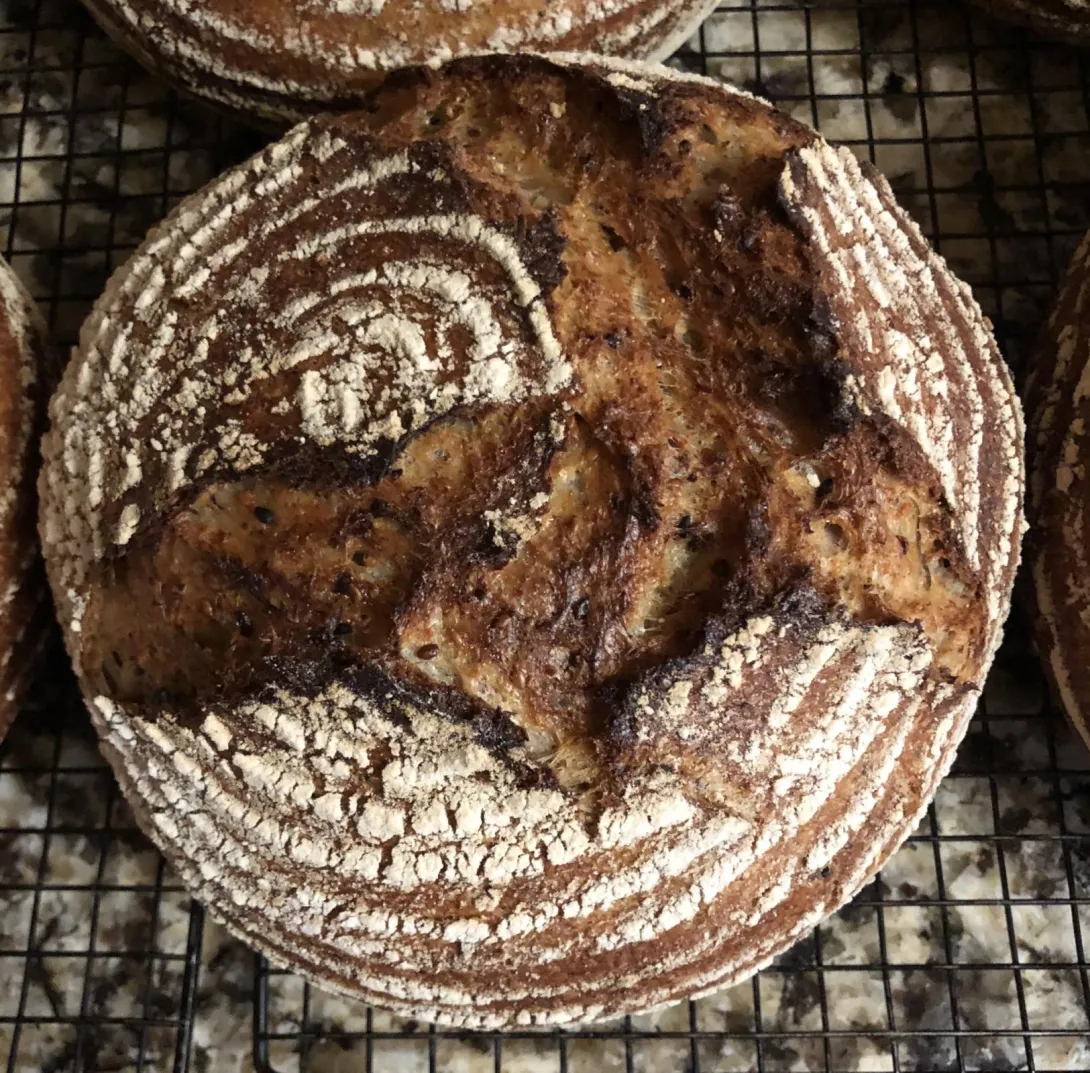Durum Buckwheat with Toasted Groats (revisited and tweaked)

It was time to redo this recipe with a few tweaks. I toasted the buckwheat groats prior to milling into flour. And a few things were changed on the fly. I decided to use a set amount of water to soak the groats rather than soak them in an undetermined amount of water and drain them. I was very conservative with the water as my notes from the last time said that my dough was way too wet. Well that swung things in the other direction. I decided to add some honey as the main dough was quite stiff.
